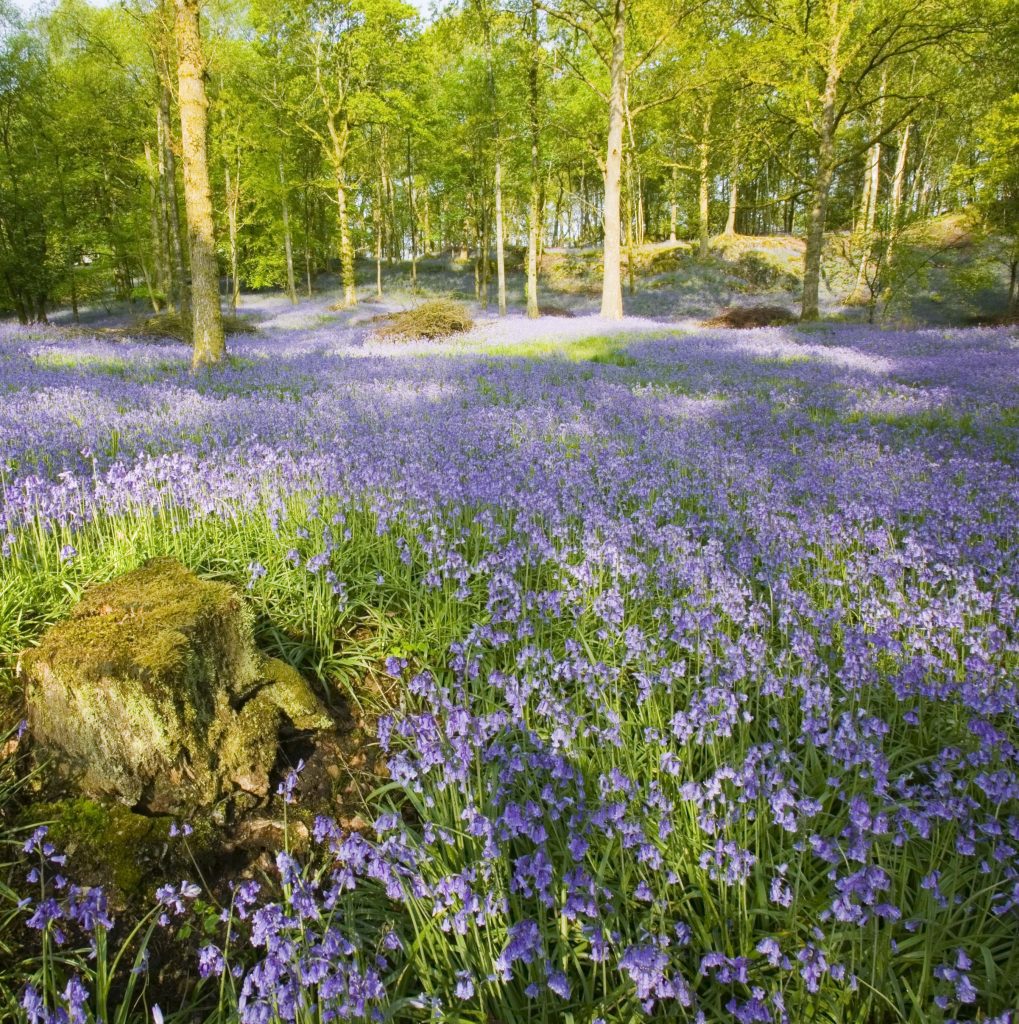Most species are adapted to a particular climate. Some may be able to adapt to tolerate higher heat and altered rainfall patterns, but others will need to shift their range to follow their preferred climates. In the UK, the ranges of many species, from birds to butterflies, have shifted north over the past four decades as a result of warmer, wetter weather. This can affect everything from their diet to their ability to reproduce.
Changing ranges in the UK
Our map shows where a variety of wildlife has already experienced the effects of climate change.

BLUEBELLS
BLOOMING OUT OF SYNC
Bluebell woods in bloom are one of spring’s most magical experiences. But the sight may become rarer as our warming climate makes large swathes of southern and central England inhospitable to these and other countryside plants. Warmer temperatures cause bluebells to leaf or flower earlier in spring, and become out of sync with the conditions that give them the best chance to grow and set seed. Our native British bluebells are already under threat from pollution, woodland destruction and introduced Spanish bluebells.

WWF-UK
MOUNTAIN HARES
WRONG COAT FOR SURVIVAL
Mountain hares in the Scottish Highlands change colour to escape predators. They turn brown for camouflage against summer hillsides, then moult to white to blend in with snow. But in a warming climate, this strategy is increasingly out of sync. From 1960 to 2016, annual snow cover in the Highlands declined by over 37 days on average – much faster than hares can adapt. On snowless hills, their white coats make them vulnerable to predators. Hares need the cold. Their alpine habitat is shrinking and warmer weather will force them to move higher, into smaller, more fragmented territories.

ATLANTIC PUFFINS
TOO LATE FOR LUNCH
The ‘clowns of the sea’, Atlantic puffins can’t survive if ocean temperatures continue to rise. Global warming causes more severe weather, including high winds and heavy rain that affect the birds’ ability to hunt. It also chills eggs and destroys nests with chicks. Puffins feed their young sandeels; in turn, sandeel larvae rely on tiny crustaceans called copepods. Warmer waters cause copepods to bloom before sandeels hatch. This results in less food for young puffins, causing colonies to fail.

BUMBLEBEES
TOO HOT TO FLY
Among our most vital pollinators, bumblebees thrive in cold climates as their fuzzy bodies generate heat while flying. But our warming world is making them overheat. A recent study found evidence of rapid and widespread declines worldwide. Bumblebees have been hit hardest in warm places, such as Spain, but even in the UK they’re in decline. While some species have colonised the cooler north, others are flying towards extinction. Bumblebees pollinate many wild plants and crops, so their loss threatens not just biodiversity but our food security.
More to explore

Seeds of hope
One incredible plant species could boost biodiversity, help human livelihoods and play a role in fighting the climate emergency. That’s why we’ve launched the biggest project of its kind in the UK – to restore seagrass


